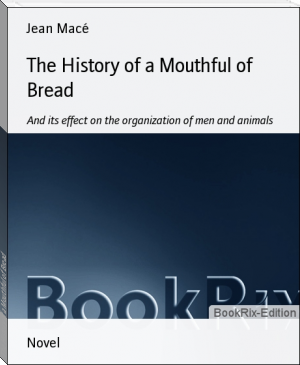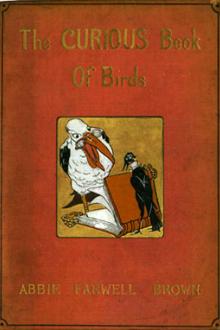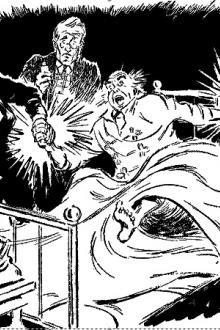The History of a Mouthful of Bread, Jean Macé [best autobiographies to read TXT] 📗

- Author: Jean Macé
Book online «The History of a Mouthful of Bread, Jean Macé [best autobiographies to read TXT] 📗». Author Jean Macé
of their existence, so that we may not expose them to the risk of suffering by our ignorance. Finally, there are fishes whose gills, still more greedy of oxygen, will not act well except in thoroughly aerated water, and who would soon die in our tanks. This is the case with the trout, who is only happy in the waters of hilly countries; rich with all the air they have carried along with them as they fell from rock to rock. Now that people are beginning to do with fishes what has long since been done with sheep and oxen-keep them in flocks to have them always ready for use-you may perhaps hear a good deal said about vessels made expressly for the carriage of trout, with a thousand inventions besides for sending air into the water, and you will not have to ask the meaning of this now.
I promised last time that I would revert in the chapter of fishes to that marvellous transformation of the crocodile which has been explained by the torrent of water he draws into his stomach. You could understand nothing about it the other day; but after what we have just seen the explanation suggests itself. Just as the extraordinary activity of life in birds is explained by that double oxygenization of blood, of which part takes place in the lungs and part in the reservoirs of air placed everywhere in the way of the capillaries, so this sudden increase of energy in the crocodile the moment it plunges into water may be explained by a second respiration suddenly established in the vast cavity of the abdomen, by the contact of the capillaries with the water which penetrates there. Hence the crocodile would then have, like the bird, a double respiration: only with him the one would be permanent and from the lungs, the other temporary and from the stomach. By this, on the one hand, he would rise up to the birds, since the blood encounters air twice over in its course, while, at the same time, he would plunge into the world of fishes, since the blood has to seek air in the water. The above, be it remembered, is only a supposition, and I ought to add that in this case there would be a good deal of danger in observing nature at work, for in front of the laboratory, where she is toiling in secret, stands on guard a row of teeth, by no means encouraging to indiscreet intruders. At the same time, if there ever were a legitimate conjecture, this is it. Everything seems to confirm it; and if it be true, we should have in the crocodile a specimen of each of the four systems adopted by nature for the mammal, the bird, the reptile and the fish. At first I spoke of two, then of three; so that even in my addition I was modestly below the mark, and had really some grounds for recommending our friends the classifiers to beware what they asserted in this case.
Talking of puzzling classifications, this is just the place for mentioning the batrachians , who have been made into a class by themselves, but who most distinctly belong to two classes at the same time; not like the crocodile by details borrowed from each, but by a fundamental change which takes place at a certain period in their organization. The batrachians are in reality reptiles, but they are reptiles which begin by being fishes, and real fishes too.
If you have ever strolled about in the country, you must have often come across those great pools of water which collect at rainy seasons in the ruts of deep lanes. Amuse yourself by looking into them in early summer, and unless the land is too parched and dry, the chances are that you will see quantities of little black fishes, almost entirely composed of a long tail joined to a large head, playing jovially in the muddy waters, and looking as if they had dropped there from the skies. These are young frogs- tadpoles , as we call them-and they are beginning their apprenticeship of life. Enclosed in each side of those great heads, they have gills, and they breathe in the same manner as fishes. Presently the two hind feet begin to bud out and grow, little by little; then the fore feet; finally, the tail wastes away till it disappears; and thus insensibly the tadpole is transformed into a frog. Observe here that the tadpole's gills share the same fate as his fish-tail; they wither and disappear by slow degrees, and gradually as they do so, his lungs are developed. The animal changes his class very quietly, and without ceasing to be genuinely the same, although it would be impossible at last to recognize the old individual in the new if you had not heard its history beforehand. This is one of the most striking exemplifications I know of the mysterious process by which nature has insensibly raised animals from one class to another, always improving upon her original plan without ever abandoning it.
On the shores of certain subterranean lakes which exist in Carniola, a country subject at this time to Austria, there are to be found batrachians far more ambitious than our frog-namely, the proteans . These cumulate rather than change: they become reptiles without ceasing to be fishes, if I may so express it; they develop lungs as they grow up, and yet keep their gills. I could tell you a thousand other particulars about these batrachians if I were to examine them all in succession; for it is a very motley family, in the bosom of which the transition from reptiles to fishes is in some imperceptible manner accomplished; from the frog, which the unanimous consent of mankind has always ranked among reptiles, to the axolotl or siren, who lives in Mexican lakes; and who, feature for feature, is exactly like a carp, with four little feet fastened under him. To be quite in order, the batrachians ought to have followed the reptiles, for their interior organization is the same; but how could I tell you about their gills without explaining that there was air in the water? and I did not want, for the sake of these intruders, whose babyhood-gills only just appear and disappear, to rob the history of the fishes of its most interesting points.
Let us be satisfied, then, with this passing glance at a dubious class, whose history is only a repetition of two others, and let us return to our friends the fishes. We have seen how they breathe, now let us look how they eat.
The modifications of the digestive apparatus are endless among fishes. The lampreys, who are placed in the lower ranks of the class, carry out to its fullest extent the type which we have already seen indicated in the serpent. The digestive tube is quite straight, without any perceptible swelling, and does not even go the whole length of the body. It comes to an end at some distance from the tail. Among some fishes an odd tendency begins to display itself, which we shall meet with again farther on. The digestive tube, after going downwards towards the bottom of the body, as we have seen it do so constantly hitherto, doubles back, and comes up again to the throat, under which it empties itself. In most cases the stomach is distinct; but it assumes a thousand different forms; as if nature had wished to try her hand in all sorts of ways in the construction of these imperfect vertebrates, before adopting the definite model which was to serve for the others.
The liver is enormous, and generally contains a great quantity of oil, the taste of which you will know if you have ever swallowed a spoonful of cod-liver oil; but in most fishes its old companion, the
pancreas , has disappeared. In its stead you will find, close by the outlet of the pylorus, the open ends of certain small tubes, which are shut in at their upper extremity like a "blind alley," and through which descends into the interstices a thick glairy fluid, given out from their sides or walls. The result is the same, you see, although the organ is different; and, remarkably enough, these little tubes are wanting among fishes, which, like carp, have a species of salivary glands in their mouths, of which the others show no trace; from which one may fairly conclude that these glands and tubes mutually supply each other's places. Here, then, you see an instance of the light which different animal organisations throw upon each other when they are compared together. In fact, this one establishes pretty clearly the real office of the pancreas in the higher races, exhibiting it to us as an internal salivary gland, intended to complete the work only begun by those in the mouth, in the case of lazy people who swallow their food too quickly.
There is the same diversity in the mouth as in the intestine. Some fishes, like the skate, have no tongue at all. Others, instead of a tongue, have a hard dry filament, very nearly immovable, and which one would think was put there like a stake, to show the place where the tongue is to be found in the more perfect organisations. There are even fishes, like the perch and the pike, whose tongue is furnished with teeth, or rather fangs; an evident sign that it has forfeited the confidential position occupied by your own good little porter. You must know also that the perch and the pike, like many other of their fellows, have teeth all over the mouth. This invasion of the palate by teeth, which began in the lizard and the serpent, assumes alarming proportions here. It is not merely the roof of the palate which is spiked with teeth: above, below, at the sides, everywhere to the very limits of the oesophagus, the little fangs triumphantly stick out their slender points. It is impossible, therefore, to state their number. Nature has scattered them broadcast without counting, just as she has done with the hairs of the beard round the human mouth; and the comparison is not so impertinent as you may think. They sometimes form an actual internal beard, even thicker than our outer one, and which sprouts from the skin into the bargain. There is one fish whose teeth are so delicate and so close together that, in passing your finger over them, you would think you were touching velvet. This does not refer to the shark, mind. His teeth are sharp-cutting notched blades, hard as steel, arranged in threatening rows round the entrance of his mouth, and cut a man in two as easily as your incisors do a piece of apple. Others, such as the skate, have their mouths paved-that is the proper term-with perfectly flat teeth. The first time your mamma is sending to buy fish beg her to let you have a skate's head to look at. You will be interested to see the small square ivory plates laid close adjoining each other, like the tiles of a church floor. It is in fact a regular hall-pavement, over which the visitors glide untouched, and are then swallowed down in the lump; thus entering straight into the house without having been stopped by the inscription nature has placed over your door and mine-"Speak to the Porter."
But all this is nothing compared to the lamprey's entrance-hall, which differs from ours in quite another way. The lamprey, as I have already told you, ranks almost lowest among fishes, and consequently among vertebrate animals, of which fishes form the rear-guard. Indeed, it is almost stretching a point to consider her worthy to bear the proud title of a vertebrate at all; for the
I promised last time that I would revert in the chapter of fishes to that marvellous transformation of the crocodile which has been explained by the torrent of water he draws into his stomach. You could understand nothing about it the other day; but after what we have just seen the explanation suggests itself. Just as the extraordinary activity of life in birds is explained by that double oxygenization of blood, of which part takes place in the lungs and part in the reservoirs of air placed everywhere in the way of the capillaries, so this sudden increase of energy in the crocodile the moment it plunges into water may be explained by a second respiration suddenly established in the vast cavity of the abdomen, by the contact of the capillaries with the water which penetrates there. Hence the crocodile would then have, like the bird, a double respiration: only with him the one would be permanent and from the lungs, the other temporary and from the stomach. By this, on the one hand, he would rise up to the birds, since the blood encounters air twice over in its course, while, at the same time, he would plunge into the world of fishes, since the blood has to seek air in the water. The above, be it remembered, is only a supposition, and I ought to add that in this case there would be a good deal of danger in observing nature at work, for in front of the laboratory, where she is toiling in secret, stands on guard a row of teeth, by no means encouraging to indiscreet intruders. At the same time, if there ever were a legitimate conjecture, this is it. Everything seems to confirm it; and if it be true, we should have in the crocodile a specimen of each of the four systems adopted by nature for the mammal, the bird, the reptile and the fish. At first I spoke of two, then of three; so that even in my addition I was modestly below the mark, and had really some grounds for recommending our friends the classifiers to beware what they asserted in this case.
Talking of puzzling classifications, this is just the place for mentioning the batrachians , who have been made into a class by themselves, but who most distinctly belong to two classes at the same time; not like the crocodile by details borrowed from each, but by a fundamental change which takes place at a certain period in their organization. The batrachians are in reality reptiles, but they are reptiles which begin by being fishes, and real fishes too.
If you have ever strolled about in the country, you must have often come across those great pools of water which collect at rainy seasons in the ruts of deep lanes. Amuse yourself by looking into them in early summer, and unless the land is too parched and dry, the chances are that you will see quantities of little black fishes, almost entirely composed of a long tail joined to a large head, playing jovially in the muddy waters, and looking as if they had dropped there from the skies. These are young frogs- tadpoles , as we call them-and they are beginning their apprenticeship of life. Enclosed in each side of those great heads, they have gills, and they breathe in the same manner as fishes. Presently the two hind feet begin to bud out and grow, little by little; then the fore feet; finally, the tail wastes away till it disappears; and thus insensibly the tadpole is transformed into a frog. Observe here that the tadpole's gills share the same fate as his fish-tail; they wither and disappear by slow degrees, and gradually as they do so, his lungs are developed. The animal changes his class very quietly, and without ceasing to be genuinely the same, although it would be impossible at last to recognize the old individual in the new if you had not heard its history beforehand. This is one of the most striking exemplifications I know of the mysterious process by which nature has insensibly raised animals from one class to another, always improving upon her original plan without ever abandoning it.
On the shores of certain subterranean lakes which exist in Carniola, a country subject at this time to Austria, there are to be found batrachians far more ambitious than our frog-namely, the proteans . These cumulate rather than change: they become reptiles without ceasing to be fishes, if I may so express it; they develop lungs as they grow up, and yet keep their gills. I could tell you a thousand other particulars about these batrachians if I were to examine them all in succession; for it is a very motley family, in the bosom of which the transition from reptiles to fishes is in some imperceptible manner accomplished; from the frog, which the unanimous consent of mankind has always ranked among reptiles, to the axolotl or siren, who lives in Mexican lakes; and who, feature for feature, is exactly like a carp, with four little feet fastened under him. To be quite in order, the batrachians ought to have followed the reptiles, for their interior organization is the same; but how could I tell you about their gills without explaining that there was air in the water? and I did not want, for the sake of these intruders, whose babyhood-gills only just appear and disappear, to rob the history of the fishes of its most interesting points.
Let us be satisfied, then, with this passing glance at a dubious class, whose history is only a repetition of two others, and let us return to our friends the fishes. We have seen how they breathe, now let us look how they eat.
The modifications of the digestive apparatus are endless among fishes. The lampreys, who are placed in the lower ranks of the class, carry out to its fullest extent the type which we have already seen indicated in the serpent. The digestive tube is quite straight, without any perceptible swelling, and does not even go the whole length of the body. It comes to an end at some distance from the tail. Among some fishes an odd tendency begins to display itself, which we shall meet with again farther on. The digestive tube, after going downwards towards the bottom of the body, as we have seen it do so constantly hitherto, doubles back, and comes up again to the throat, under which it empties itself. In most cases the stomach is distinct; but it assumes a thousand different forms; as if nature had wished to try her hand in all sorts of ways in the construction of these imperfect vertebrates, before adopting the definite model which was to serve for the others.
The liver is enormous, and generally contains a great quantity of oil, the taste of which you will know if you have ever swallowed a spoonful of cod-liver oil; but in most fishes its old companion, the
pancreas , has disappeared. In its stead you will find, close by the outlet of the pylorus, the open ends of certain small tubes, which are shut in at their upper extremity like a "blind alley," and through which descends into the interstices a thick glairy fluid, given out from their sides or walls. The result is the same, you see, although the organ is different; and, remarkably enough, these little tubes are wanting among fishes, which, like carp, have a species of salivary glands in their mouths, of which the others show no trace; from which one may fairly conclude that these glands and tubes mutually supply each other's places. Here, then, you see an instance of the light which different animal organisations throw upon each other when they are compared together. In fact, this one establishes pretty clearly the real office of the pancreas in the higher races, exhibiting it to us as an internal salivary gland, intended to complete the work only begun by those in the mouth, in the case of lazy people who swallow their food too quickly.
There is the same diversity in the mouth as in the intestine. Some fishes, like the skate, have no tongue at all. Others, instead of a tongue, have a hard dry filament, very nearly immovable, and which one would think was put there like a stake, to show the place where the tongue is to be found in the more perfect organisations. There are even fishes, like the perch and the pike, whose tongue is furnished with teeth, or rather fangs; an evident sign that it has forfeited the confidential position occupied by your own good little porter. You must know also that the perch and the pike, like many other of their fellows, have teeth all over the mouth. This invasion of the palate by teeth, which began in the lizard and the serpent, assumes alarming proportions here. It is not merely the roof of the palate which is spiked with teeth: above, below, at the sides, everywhere to the very limits of the oesophagus, the little fangs triumphantly stick out their slender points. It is impossible, therefore, to state their number. Nature has scattered them broadcast without counting, just as she has done with the hairs of the beard round the human mouth; and the comparison is not so impertinent as you may think. They sometimes form an actual internal beard, even thicker than our outer one, and which sprouts from the skin into the bargain. There is one fish whose teeth are so delicate and so close together that, in passing your finger over them, you would think you were touching velvet. This does not refer to the shark, mind. His teeth are sharp-cutting notched blades, hard as steel, arranged in threatening rows round the entrance of his mouth, and cut a man in two as easily as your incisors do a piece of apple. Others, such as the skate, have their mouths paved-that is the proper term-with perfectly flat teeth. The first time your mamma is sending to buy fish beg her to let you have a skate's head to look at. You will be interested to see the small square ivory plates laid close adjoining each other, like the tiles of a church floor. It is in fact a regular hall-pavement, over which the visitors glide untouched, and are then swallowed down in the lump; thus entering straight into the house without having been stopped by the inscription nature has placed over your door and mine-"Speak to the Porter."
But all this is nothing compared to the lamprey's entrance-hall, which differs from ours in quite another way. The lamprey, as I have already told you, ranks almost lowest among fishes, and consequently among vertebrate animals, of which fishes form the rear-guard. Indeed, it is almost stretching a point to consider her worthy to bear the proud title of a vertebrate at all; for the
Free e-book «The History of a Mouthful of Bread, Jean Macé [best autobiographies to read TXT] 📗» - read online now
Similar e-books:





Comments (0)